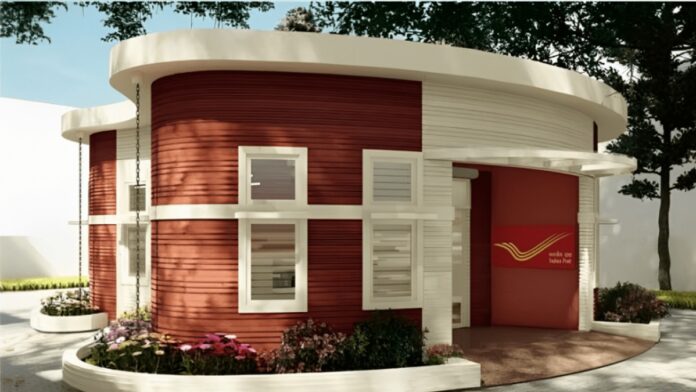Two years after finance minister Nirmala Sitharaman inaugurated India’s first 3D-printed house at the Indian Institute of Technology Madras campus to boost affordable housing across the country, Larsen & Toubro is close to completing construction of India’s first public building in Bengaluru, using 3D-printing technology.
The building, a post office sprawled over 1,100 square feet, is being 3D-printed at a cost of Rs 23 lakh over 45 days. Although the technology cuts the construction time by 30-40 percent, the cost remains almost the same as for single projects, the company said.
Contrary to traditional construction methods, 3D-printing uses a robotic arm to create layers using a special concrete mixture fed into the system. The mixture has special adhesives for quick drying and other functions.
The system is controlled by an operator who feeds into the design and mainly controls the speed at which the mixture is funnelled out of the robotic arm according to the design plans.
Its advantages
Satish said freedom of design, customisation and completely digital controls add to the advantages of a 3D-printing system.
“The system can understand the placement of doors or windows or even electrical outlets and construct the walls accordingly. The walls will have six times more strength than the walls made out of brick,” he said.
Additionally, the walls will have the ability to regulate temperature, leading to less usage of energy to heat or cool the interiors.
The robotic printer that L&T is using for the post office project is from Denmark. Satish said two such machines have already been built in India.
The 3D-concrete printer uses about 30 percent fly ash as raw material and makes comparatively less noise than the traditional construction processes.
“We spent four years in research and development and the entire concrete mixture is being built at the site. The only manual part here is reinforcements like steel. The rest is automated and about 25-30 labourers are required to complete the entire project,” Satish added.
According to L&T, the printer can function for 20-24 hours at a stretch. However, it can only build 1-1.5 metres of walls every day. “After building a layer, we need it to be dry before we can continue construction again,” he pointed out.
Cost a major factor
Satish said for individual projects, the cost of printing a building will be the same as that incurred by traditional methods.
“However, when we look at a volume of projects, the cost can come down significantly by at least 20 percent. The major advantage here is we can complete 100,000 sq. ft within six months or even less,” Satish said.
Additionally, the government is working on a standard code for 3D-concrete printing, which will take two to three years more, L&T said.
Currently, the company plans to construct eight villas in Bengaluru using the technology.
“After the completion of this post office, the Karnataka state government will submit its report and we can look at further collaboration for future projects,” Satish said.












